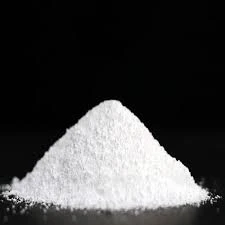Chemical Water Purification Methods An Overview
Water is an essential resource for life, and ensuring its purity and safety is a significant concern worldwide. Various methods have been developed to purify water, among which chemical water purification holds a prominent place. This article explores the various chemical methods used for water purification, their mechanisms, advantages, and the scenarios in which they are most effective.
Chlorination
One of the most widely used chemical methods for water purification is chlorination. Chlorine is added to water as a disinfectant to kill bacteria, viruses, and other pathogens. The process involves adding chlorine gas or chlorine compounds, such as sodium hypochlorite, to the water. Chlorination is particularly effective in killing infectious microorganisms, making it a vital step in municipal water treatment systems. Additionally, it provides residual disinfection, meaning that it continues to inhibit microbial growth even after the initial treatment.
However, chlorination does have some downsides. The formation of chlorinated organic compounds, such as trihalomethanes (THMs), can occur when chlorine reacts with organic matter in water, which may pose health risks. Consequently, water treatment facilities must carefully manage chlorine dosages and consider the presence of organic contaminants.
Ozone Treatment
Ozone (O3) is another powerful oxidizing agent used in water purification. Ozone treatment involves bubbling ozone gas through contaminated water, leading to the destruction of microorganisms due to its strong oxidation potential. It effectively destroys bacteria, viruses, and protozoa while also breaking down some chemical contaminants, including pesticides and pharmaceuticals.
The advantages of ozone treatment include its rapid action and lack of residual by-products, making it an environmentally friendly option. However, the challenges lie in its production and the need for specialized equipment. Additionally, because ozone has a very short half-life, the treated water must be used quickly, as ozone dissipates rapidly.
chemical water purification methods

Coagulation and Flocculation
Coagulation and flocculation are chemical processes that help remove suspended solids and turbidity from water. Coagulants, like aluminum sulfate (alum), are added to water where they neutralize the charges of suspended particles, causing them to clump together into larger aggregates called flocs. This process is followed by flocculation, where gentle stirring encourages the growth of these flocs until they settle out during sedimentation.
This method is particularly effective in treating surface water that is turbid or contains significant organic material, such as in lakes and rivers after heavy rainfall. Coagulation and flocculation not only help improve water clarity but also enhance disinfection efficiency in subsequent steps.
Advanced Oxidation Processes (AOPs)
Advanced Oxidation Processes (AOPs) combine strong oxidants such as hydrogen peroxide, ozone, and UV light to generate hydroxyl radicals, which are powerful oxidants capable of breaking down complex organic molecules. AOPs are particularly useful for degrading persistent pollutants in wastewater and provide a robust method for treating water contaminated with pharmaceuticals and industrial chemicals.
The effectiveness of AOPs lies in their ability to degrade a wide range of contaminants that traditional methods may not adequately address. However, the need for sophisticated technology and higher operational costs can limit their widespread application.
Conclusion
Chemical water purification methods play a crucial role in transforming contaminated water into safe drinking water. From the traditional approach of chlorination to advanced techniques like ozone treatment and AOPs, each method has its own strengths and limitations. As the demand for clean water continues to grow, ongoing research and development in chemical water purification methods will be essential to enhance efficiency, reduce costs, and minimize environmental impacts. In doing so, we can ensure that communities worldwide have access to safe and clean water—an indispensable resource for health and wellbeing.

